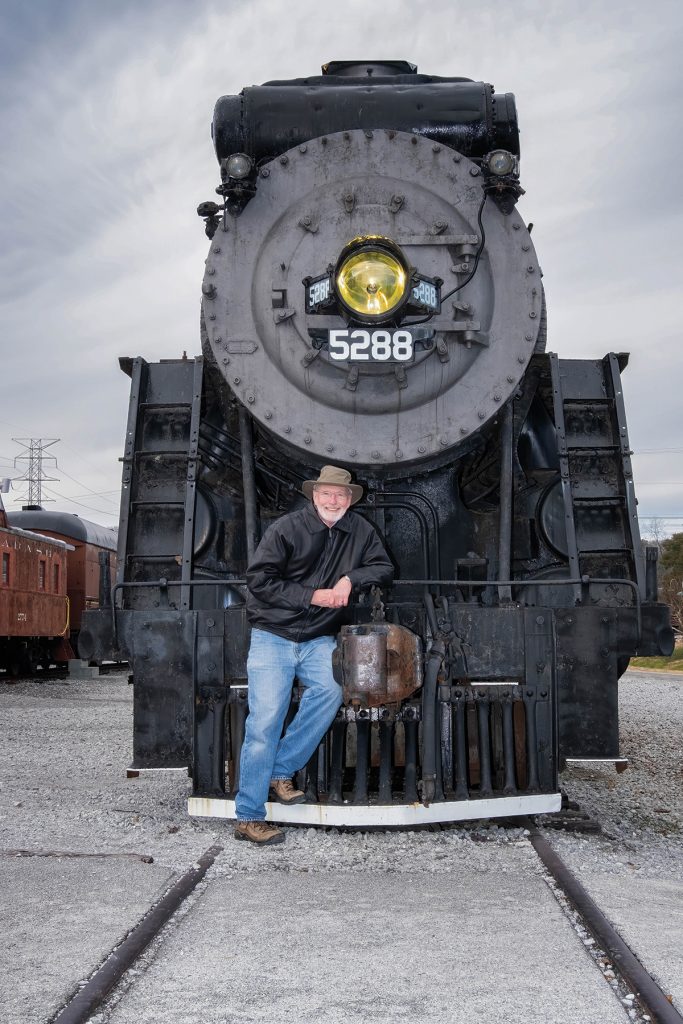
Jeffrey Stoner shows a deep love for his favorite subject.
Photo by Jeffrey Stoner
Jeffrey Stoner became enchanted by photography during childhood, but only began marketing his work in 2004. The images sold well, and in 2007 he made a difficult decision to leave what he describes as his dream job to fully pursue a love of photography. Stoner’s work has been published or exhibited regionally, nationally, and internationally, and he is best known for his portraits of goats and images of steam locomotives.
How’d you get into goat portraits?
In 2008, soon after we moved to this area, my wife saw an article about goats being used to clear growth on Roan Mountain. She said, “You should go up there.”
What did you discover?
Photographing goats on Roan Mountain took incredible patience. You have no control over goats. They have a mind of their own. You have to try to guess one step ahead of them if you can. Every time you whistle, a dog will look up. With goats, you can make a noise one time and they’ll look up. But you only get one shot.
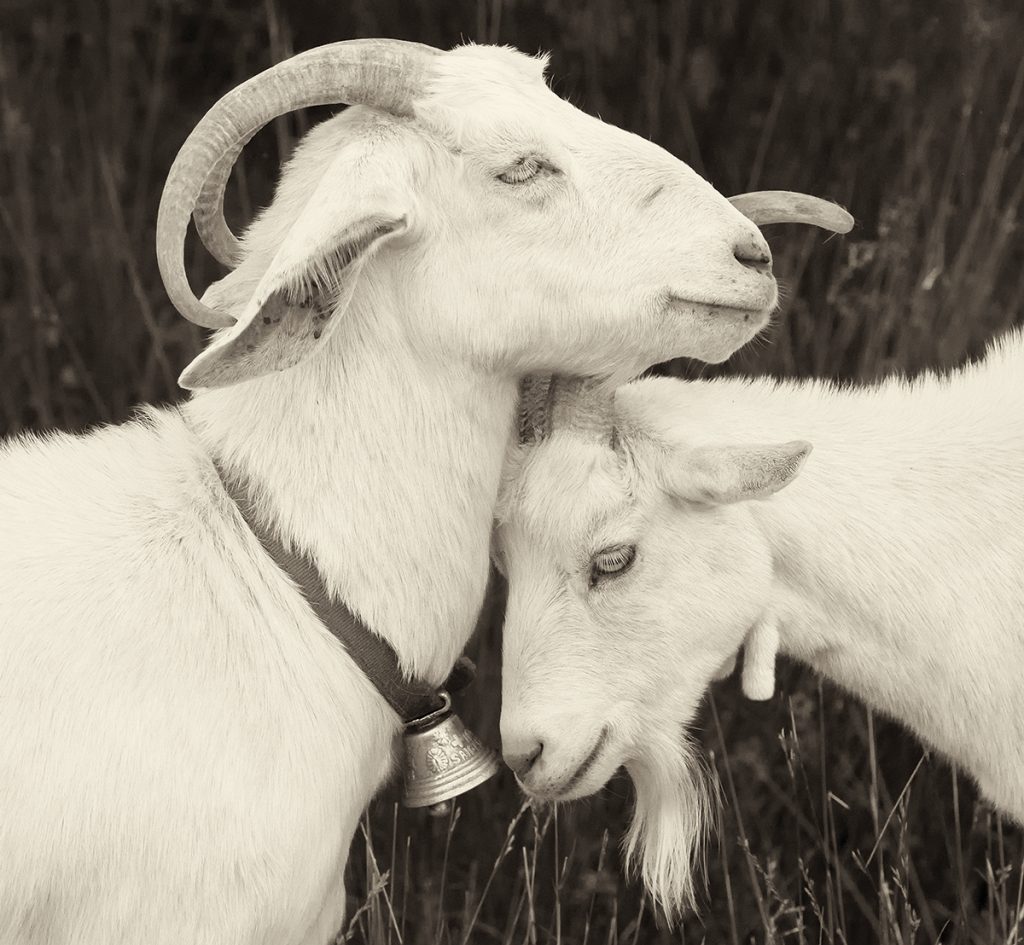
Photo by Jeffrey Stoner
After that they ignore you?
You can stomp your foot and they’ll look because I think they feel the vibration. But when you stomp the camera moves, so you can’t get a good shot.
Why do you think goats are so captivating?
Part of it depends on when you find them — whether it’s right after they’ve been shorn or when they need to be. And they all have different personalities. By the second year on Roan Mountain, I think the goats knew me. They would come up and greet me.
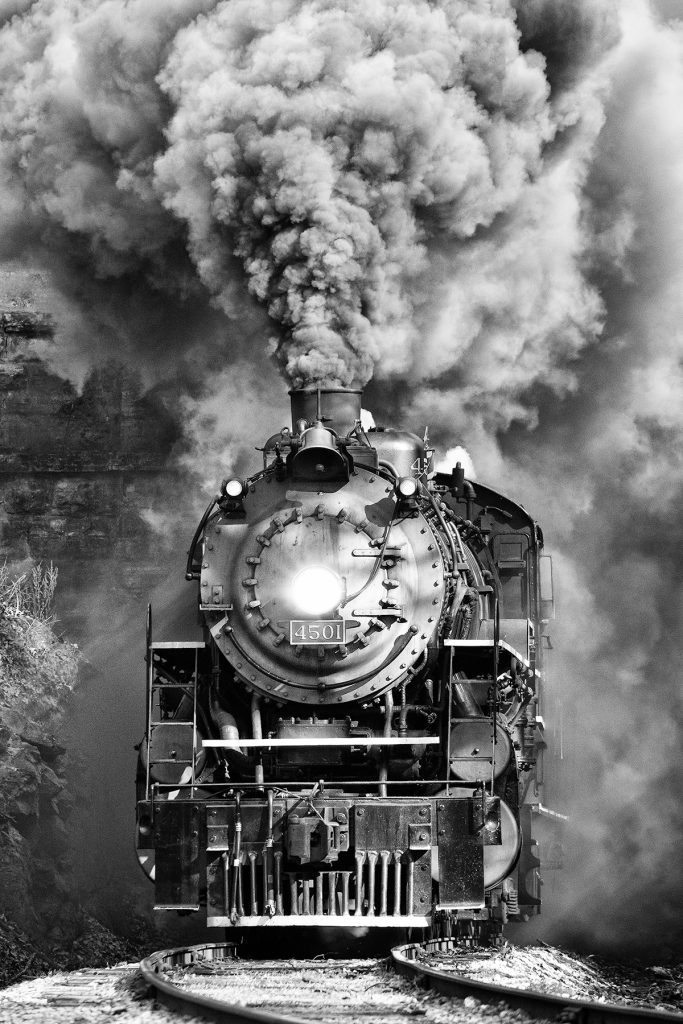
Photo by Jeffrey Stoner
How’d you go from goats to iron horses?
There is something about trains that really captures the imagination. What you try to do is tell a story, and to do that, you want an interesting background. I was part of a photographer’s weekend in Cass, West Virginia, where they had these historic trains. While the others were eating breakfast, I went down to where they were getting the trains ready. Under the water tower filling the tank, shoveling coal, greasing the parts. Steam pouring out under the train. That’s the good stuff, and the other photographers all missed it.
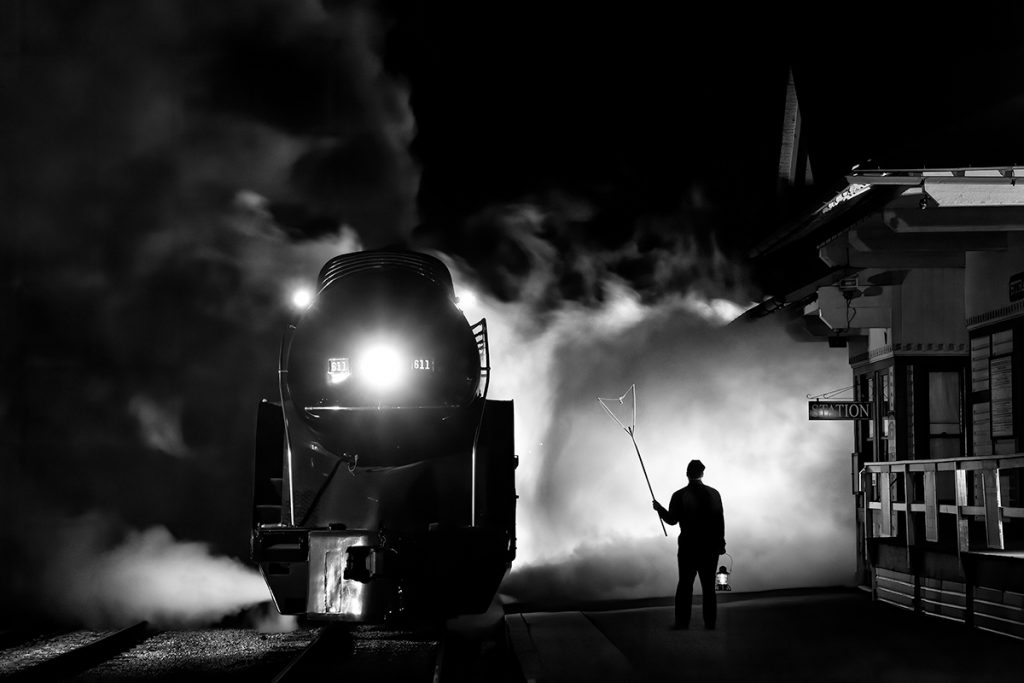
Photo by Jeffrey Stoner
The steam underneath adds so much drama.
Sometimes they purposely throw smoke bombs down the stack and underneath trains that aren’t even running [to showcase the steam engines]. I took a couple of photos of them doing that, but didn’t like it. To me it didn’t feel real; it was like pretend.

Photo by Jeffrey Stoner
What about your photos of the Amish kids watching the train?
Their family made whoopie pies and had soda to sell to the tourists who came to see the train.
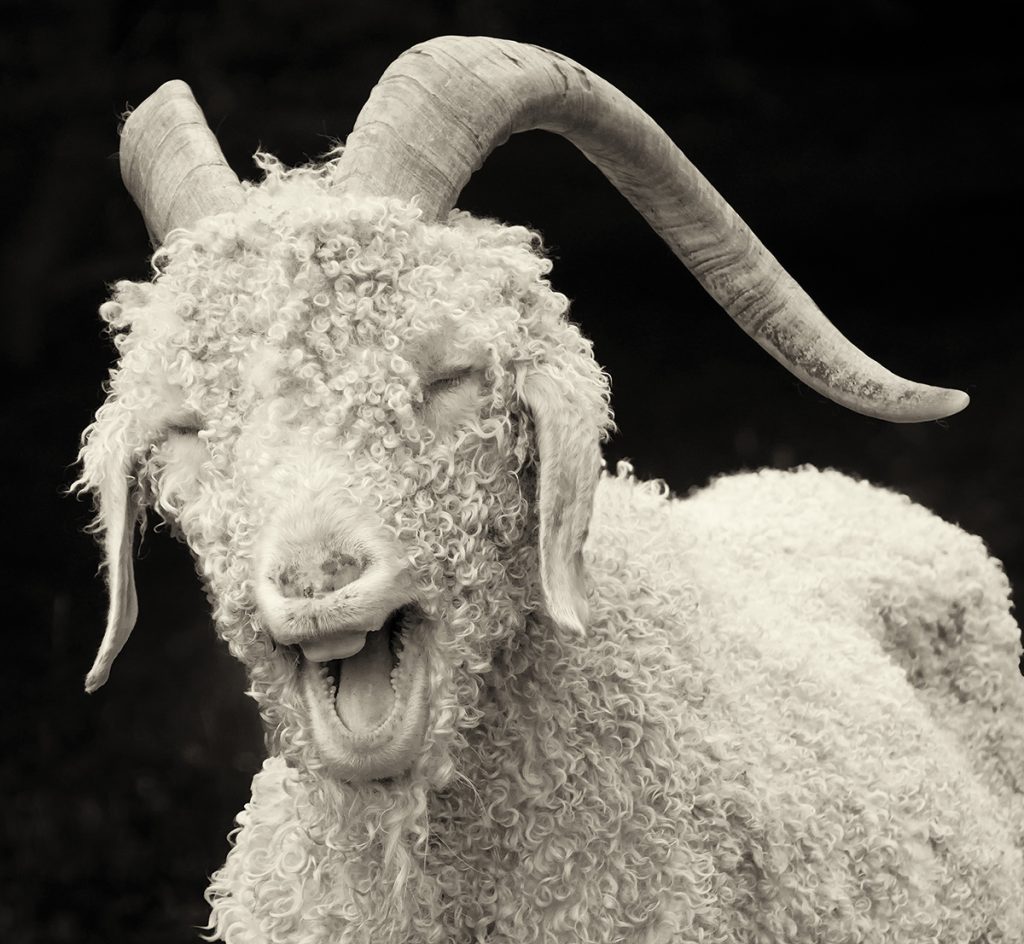
Photo by Jeffrey Stoner
I saw photos of what looked like a period-piece movie set.
Those women were WWII civilian re-enactors; they had all the authentic clothing and everything. During the war, women ran the factories and there were like 114,000 [women] working on the railroad, building and repairing engines.
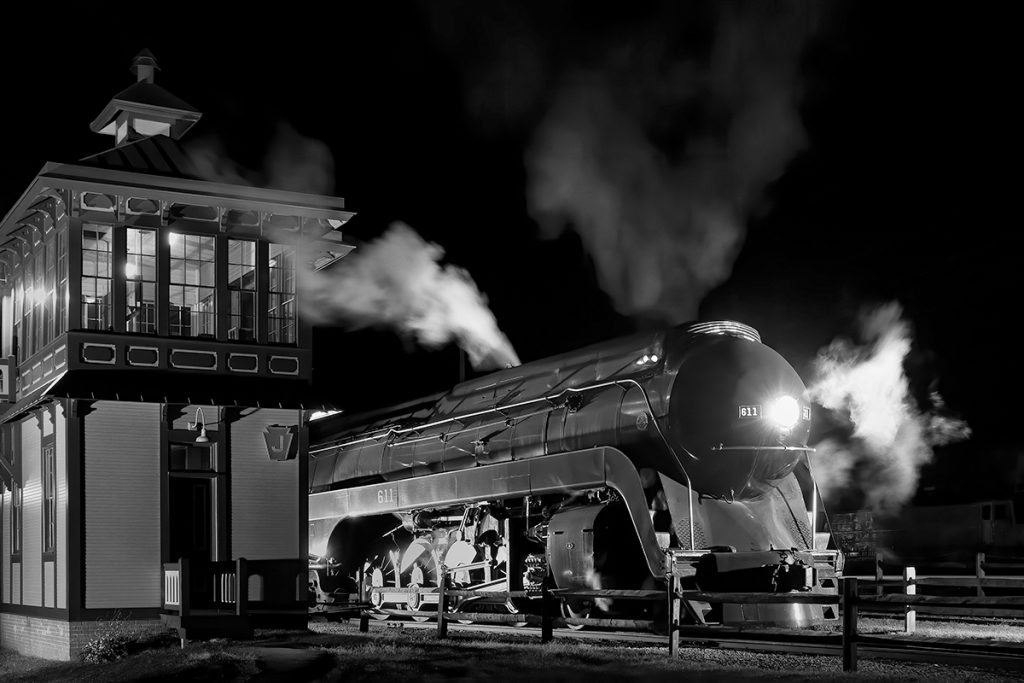
Photo by Jeffrey Stoner
Wait, so wartime re-enactment of American civilians thousands of miles from the battlefield is a thing?
Yeah, that’s what they do.

Photo by Jeffrey Stoner
Jeffrey Stoner’s work is on view at Woolworth Walk (25 Haywood St., Asheville, woolworthwalk.com); Artisans on Main (14 North Main St., Weaverville, “Artisans on Main” on Facebook); and Twigs & Leaves Gallery (98 North Main St., Waynesville, twigsandleaves.com). For more information, visit jeffreystonerphotography.com. (Also on Facebook and Instagram: @jeffreystonerphotography).